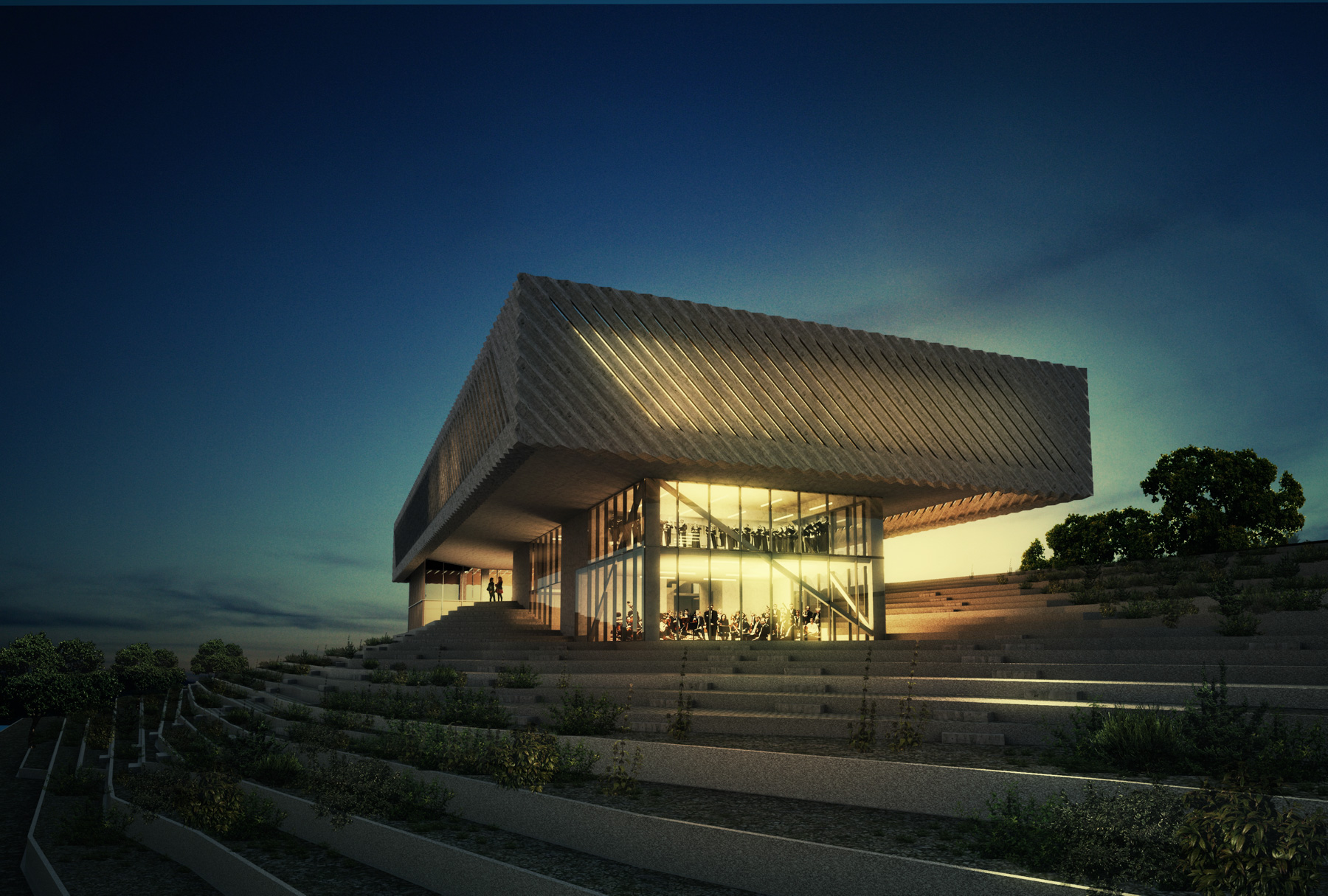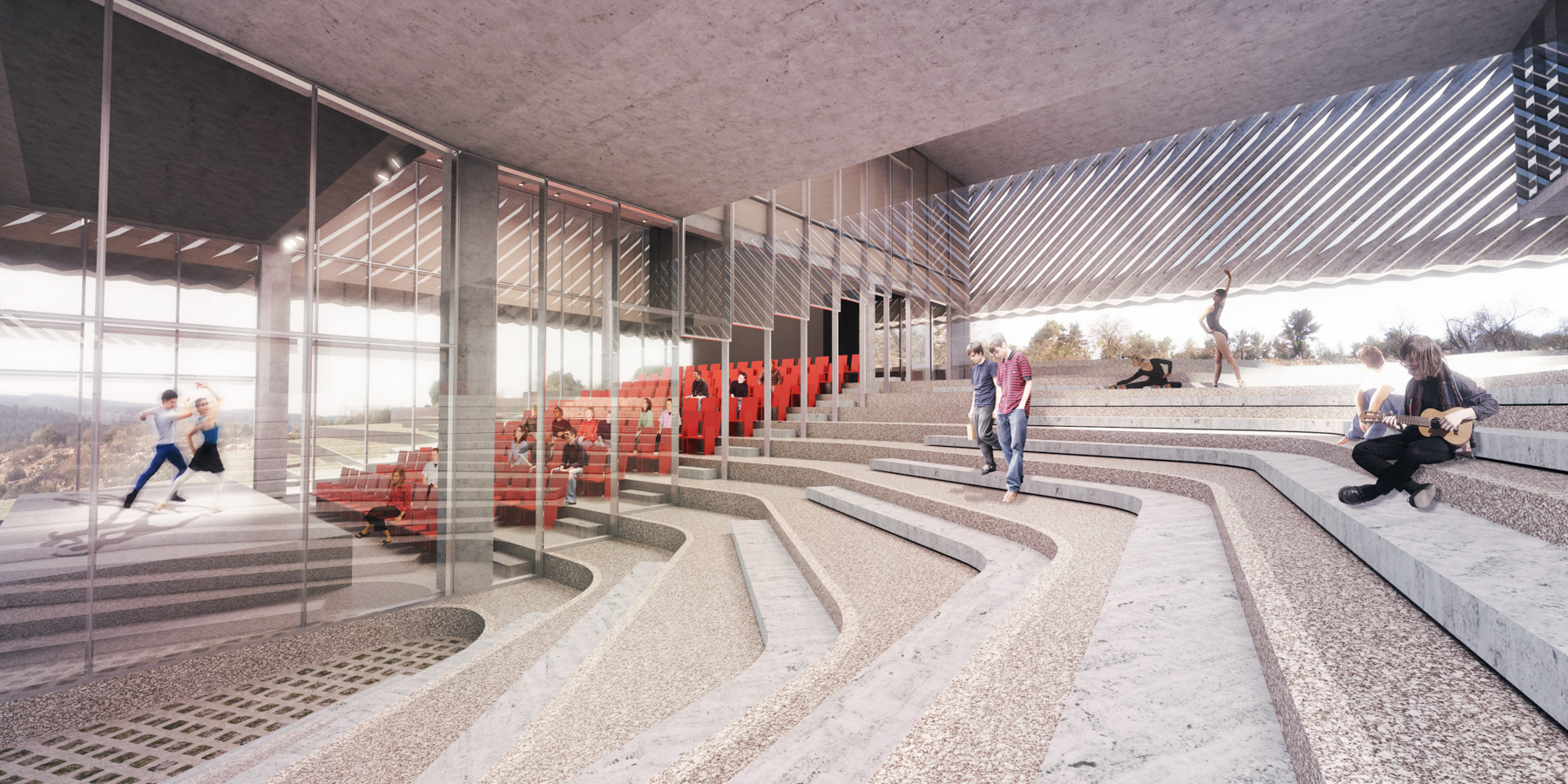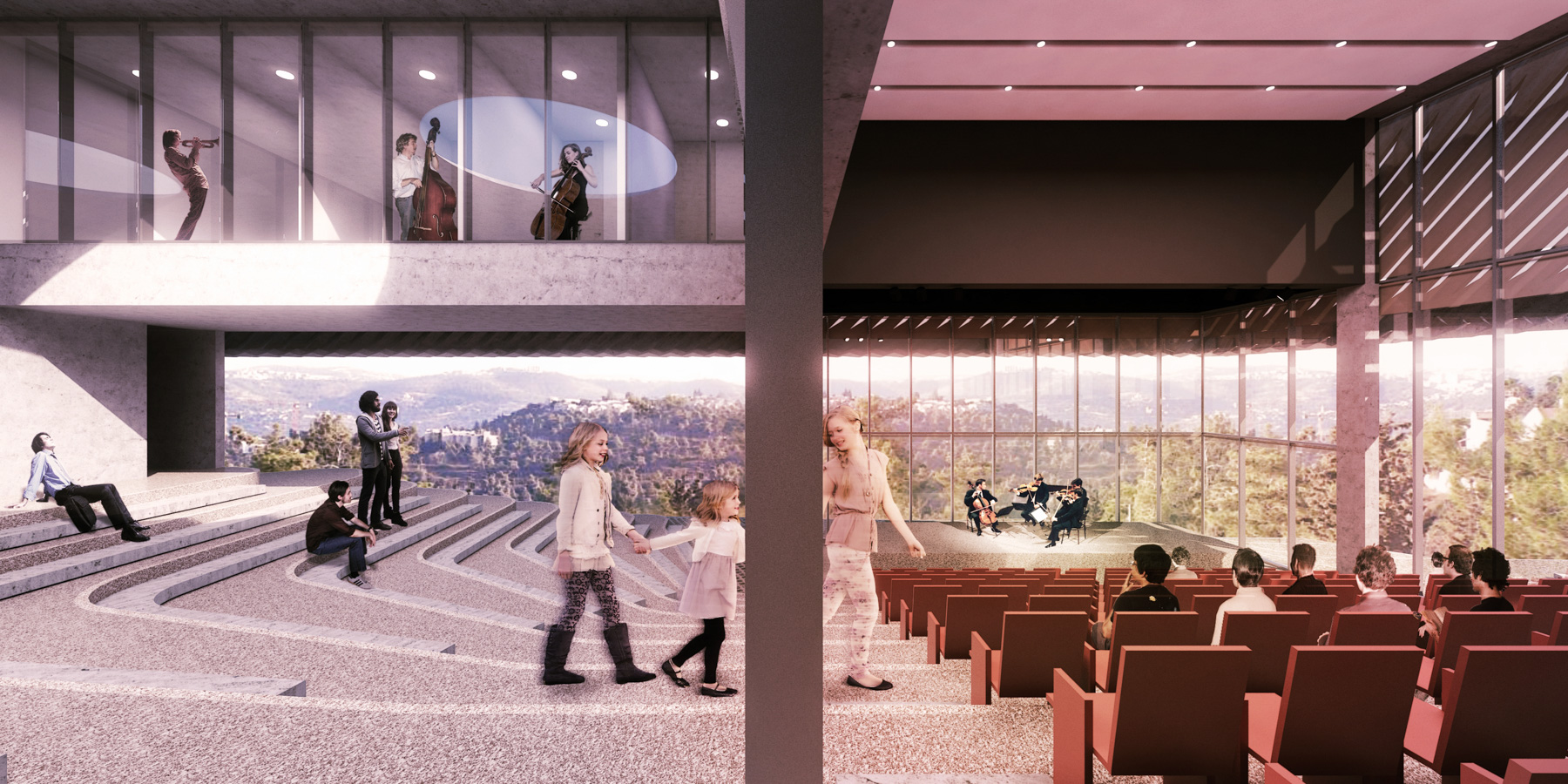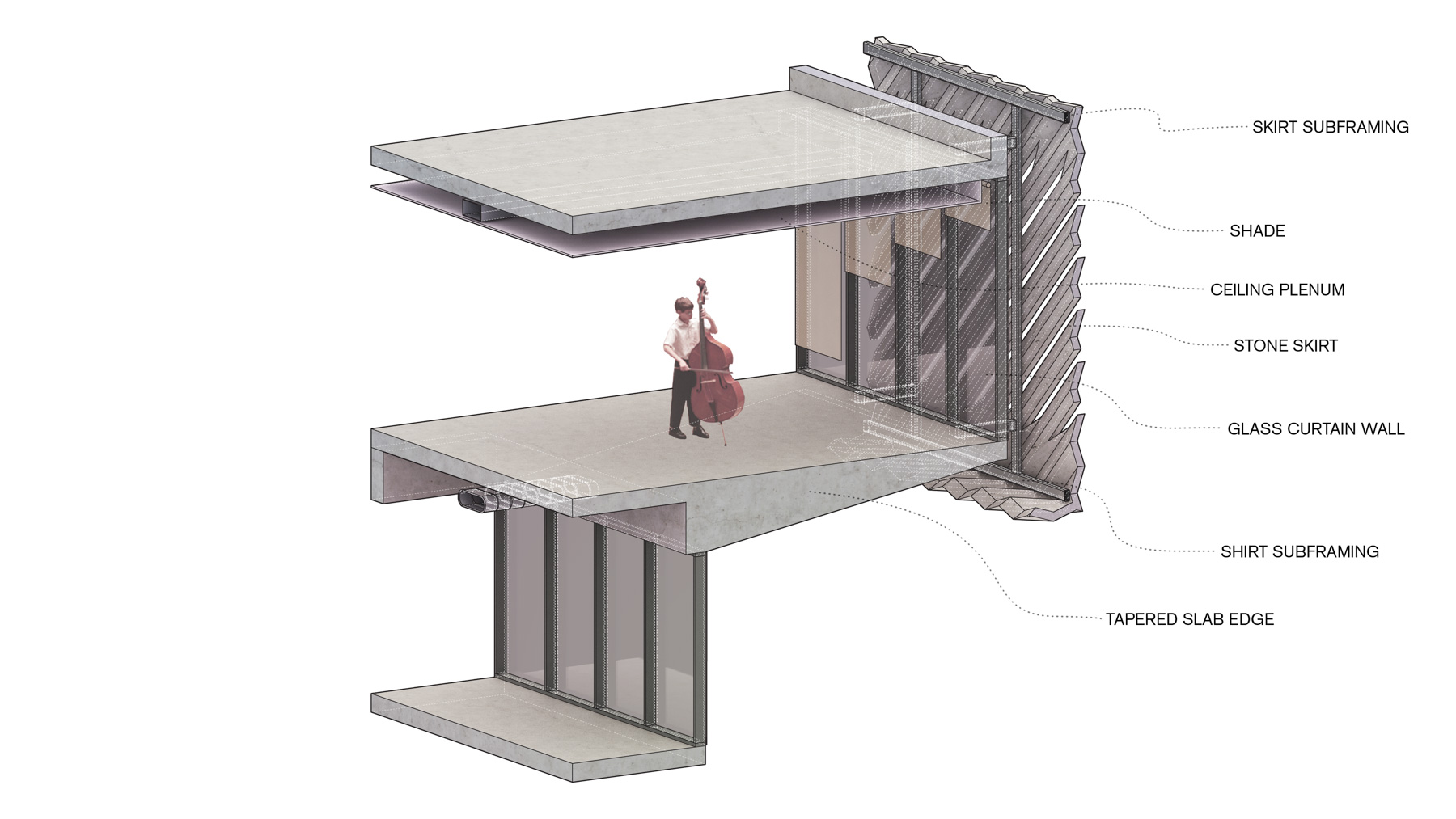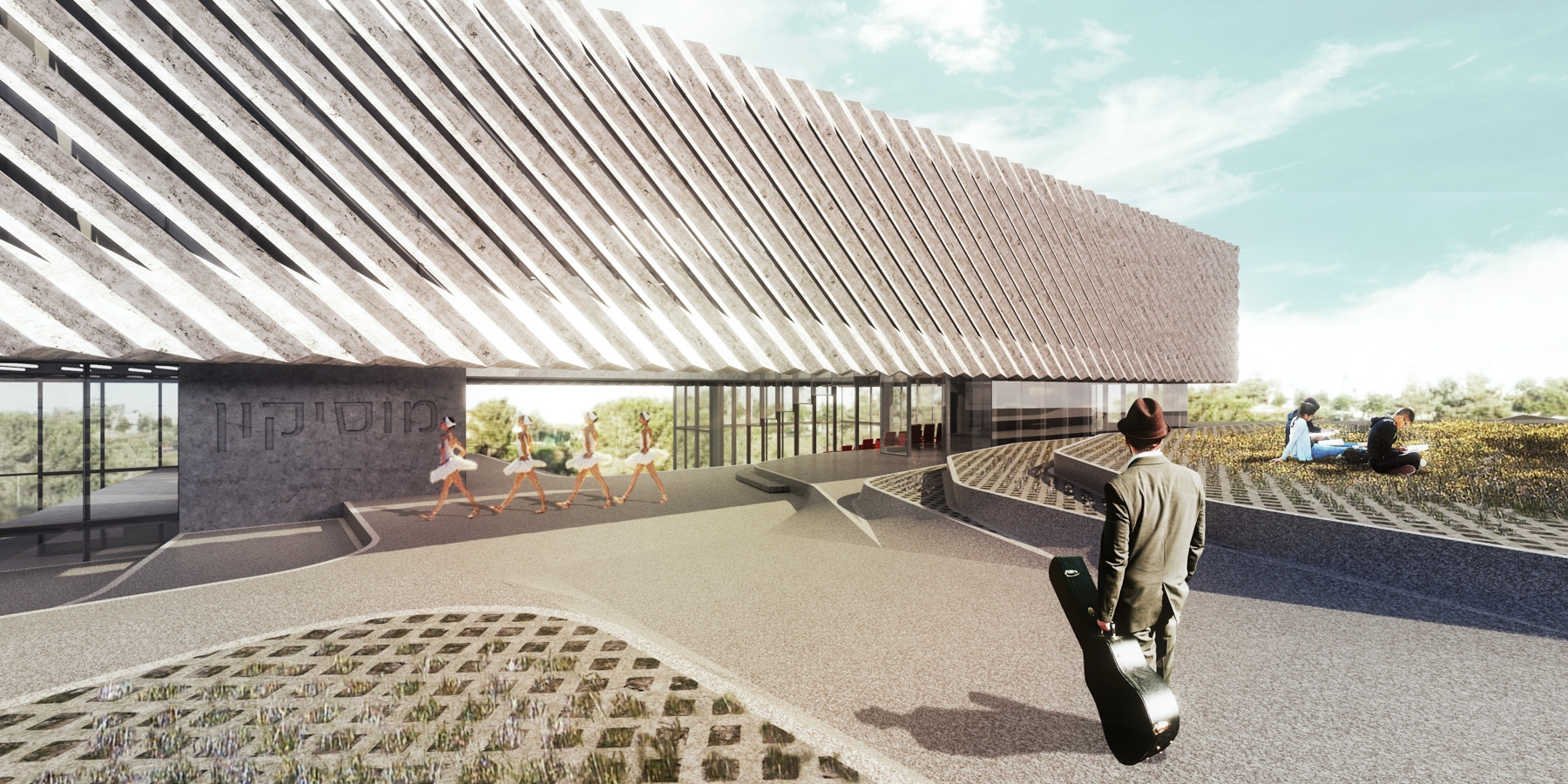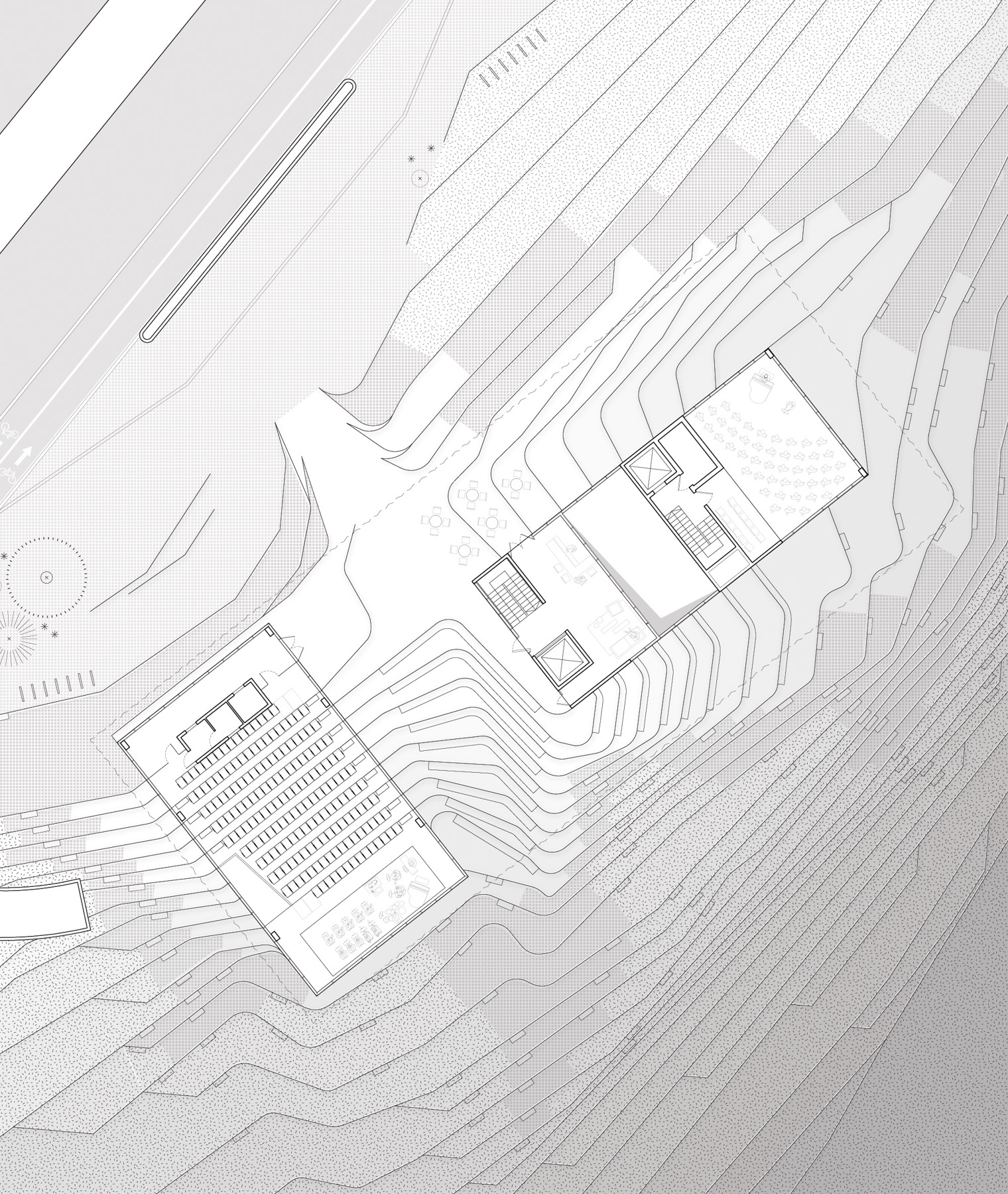Competition entry, 2016 – Finalist.
Project Team: Lee Altman, Travis Bunt, Thomas Heltzel, Barak Pliskin, James Quick, Amy Shell, and Mat Staudt.
Pliskin Architecture’s entry for the competition to design a new music conservatory in Mevaseret Zion, a small town located west of Jerusalem. The competition was organized by the Israeli Association of Architects, together with a non-profit active within the community and that is engaged in music programs for groups and individuals across a board age spectrum. The project site for the music school sits at an intersection of built fabric and open terrain, overlooking a scenic valley.
Our Proposal leverages this opportunity and maintains a visual connection with the landscape by lifting the primary, private programs to a second level while maintaining only the most public programs at the ground level. The landscape is developed to allow a gradual transition between hardscape and softscape, encouraging various activities. Public functions like the auditorium, the choir room, and the orchestra are located in transparent glass boxes which can be closed for privacy using acoustic curtains, allowing different acoustic conditions depending on the type of music rehearsed. Private educational spaces are housed in a second floor surrounded by a perforated stone veil, offering a contemporary interpretation of the ubiquitous stone materiality of Jerusalem and the region.
Competition Text
Scenic Values in an Urban Setting
The site of the new music conservatory possesses significant landscape and urban features. Its location on Har’el Boulevard by Khalilim Square complements square’s cultural and urban prominence, as its commercial and public uses are expanded. The site also allows direct access to Har’el Park, an open and undeveloped ravine, which is otherwise hard to reach and is currently inaccessible to the residents due to severe topographical differences.
Our proposal utilizes the unique scenic assets of the site and brings them within reach of the residents by elevating the classroom programs to the upper level, and creating a continuous open space at street level. This allows access to the different program spaces while creating a new public space that overlooks the ravine and offers direct entrances to it. The unique scenery and the topographical changes of the site act as integral pieces of the design and create a gradual transition from the open public space, the enclosed public space of the auditorium, and the protected and private classrooms of the conservatory.
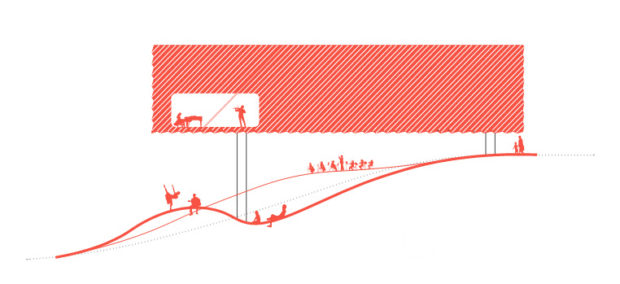
UNIQUE PUBLIC SPACE
The new public space leads the visitors from street level to a partially covered plaza that acts as the main access point for the different functions of the conservatory. The massing creates opportunities to expose the activity within the conservatory to the visitors in the plaza and the adjacent café. The auditorium is nestled into the hillside and faces south-east in the direction of the ravine. The backstage and support spaces are located under the seating to allow the ravine to act as a backdrop for the performances in the space. This location also provides direct access from the parking lot and loading dock to backstage and the musician’s room, allowing the arrival of artists and instruments out of sight of the arriving audience. The auditorium adapts acoustically to different music types using motorized acoustic roller shades that accommodate different reverb times by changing the ratio of reflective and absorptive surfaces. The dance hall, the orchestra room, and the choir room are also at the lower level, allowing views in and out of them, while utilizing shades to control privacy and acoustics as needed.
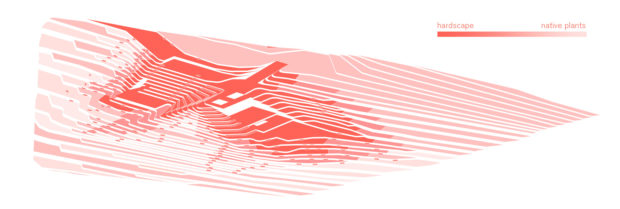
MATERIAL AND SPACE
The elevated classroom level is clad with a slotted stone enclosure that allows filtered light to enter the spaces, balancing natural light with privacy needs, and offering a contemporary interpretation of the traditional stone cladding that is unique to this area. Several of the private study spaces face the entrance plaza below, providing students with the option of raising the shades to create a visual connection with visitors and expose the variety of learning opportunities that the conservatory provides. Another unique experience is provided in the rock rooms – a motorized skylight allows the room’s roof to fully open, creating an open-air-patio rehearsal space when the weather allows it.



